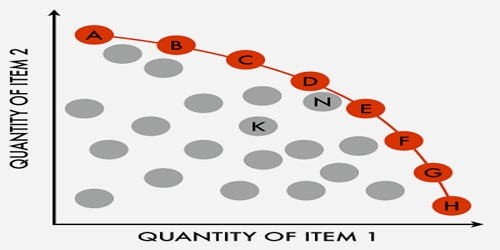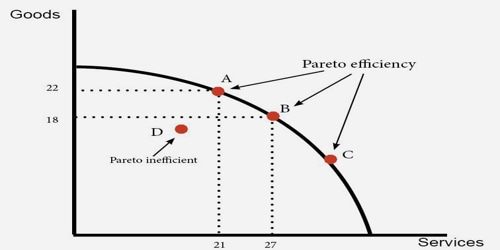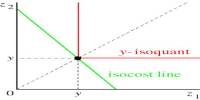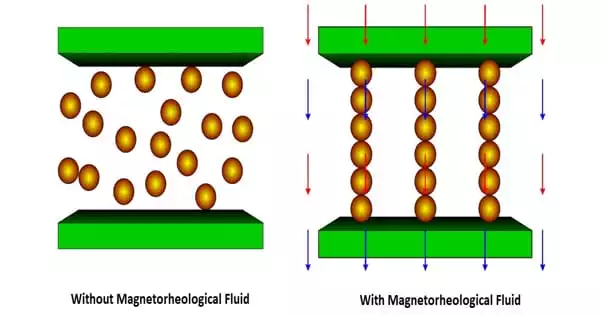About Pareto Efficiency
Pareto efficiency (or Pareto optimality) is a quality of allocations in economics and game theory. If an allocation is Pareto efficient, no option can be made better off without making at least one other option worse off. The concept is named after Vilfredo Pareto (1848–1923), Italian engineer and economist, who used the concept in his studies of economic efficiency and income distribution. The concept has been applied in academic fields such as economics, engineering, and the life sciences.
It’s important to note that a Pareto efficient allocation, while always most efficient, is not necessarily the best or most fair. An allocation may be very unfair and very unequal while still being Pareto efficient.
There is typically more than one Pareto efficient allocation. The set of all Pareto efficient allocations is called the Pareto frontier, Pareto front or Pareto set. The following image shows several Pareto efficient options as red dots; Grey dots are not Pareto efficient:

A Pareto improvement occurs when a change in allocation harms no one and helps at least one person, given an initial allocation of goods for a set of persons. The theory suggests that Pareto improvements will keep enhancing value to an economy until it achieves a Pareto equilibrium, where no more Pareto improvements can be made.
A Pareto improvement is said to occur when at least one individual becomes better off without anyone becoming worse off.
Pareto efficiency will occur on a production possibility frontier. When an economy is operating on a simple production possibility frontier, (e.g. at point A, B or C) it is not possible to increase an output of goods without reducing an output of services

However, at Point D (16 goods and 17 services) It is possible to increase either without leading to a decline in the output of the other. Thus to be at point D would be classed as Pareto inefficient, and this is generally considered to be bad for the economy.
“Pareto efficiency” is considered as a minimal notion of efficiency that does not necessarily result in a socially desirable distribution of resources: it makes no statement about equality or the overall well-being of a society.
Aside from applications in economics, the concept of Pareto improvements can be found in many scientific fields where trade-offs are simulated and studied to determine the number and type of reallocation of resource variables necessary to achieve Pareto efficiency. In the business world, factory managers may run Pareto improvement trials, in which they reallocate labour resources to try to boost the productivity of assembly workers without say, decreasing the productivity of the packing and shipping workers.
Pareto efficiency is related to the concept of productive efficiency. Productive efficiency is concerned with the optimal production of goods which occurs at the lowest point on the short run average cost curve and occurs on a PPF.
Pareto efficiency is also concerned with allocative efficiency. To be Pareto efficient the distribution of resources needs to be at a point where it is impossible to make someone better off without making someone worse off.
It would be incorrect to treat Pareto efficiency as equivalent to societal optimization, as the latter is a normative concept that is a matter of interpretation that typically would account for the consequence of degrees of inequality of distribution. It does not require a totally equitable distribution of wealth. An economy in which a wealthy few hold the vast majority of resources can be Pareto efficient. This possibility is inherent in the definition of Pareto efficiency; often the status quo is Pareto efficient regardless of the degree to which wealth is equitably distributed.
Information Source:
















